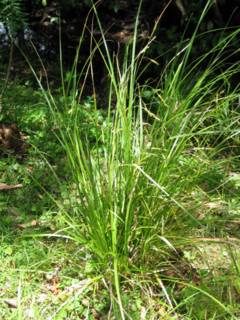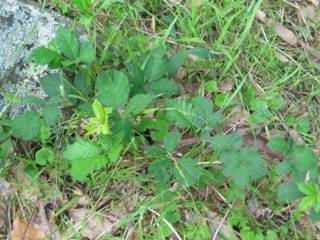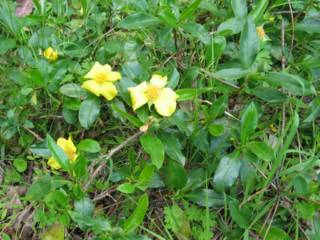The recent rain has brought a burst of weed growth on the farm. There are two categories, vineyard row weeds and pasture weeds. You cannot leave them uncontrolled. They need to be dealt with before they seed. As the old saying goes “one years seeds is seven years weeds”.
Vineyard row weeds are a diverse collection of plants that grow easily in the rows as these are kept bare soil most of the growing season and wind blown seeds lodge there in autumn to germinate the following spring. They are easily disposed of spraying with a systemic herbicide like glyphosate (Roundup® or a cheaper generic). Care must be taken not to let any over-spray get to the green parts of the growing vines as this chemical is non specific and will kill or severely retard most anything it settles on. I use an upside down plastic bucket slotted over the spray head to stop drift.
Pasture weeds are usually endemic to the region and are spread by seed, rhizomes or by suckering. The very low grass cover at the end of winter aids germination of the first type.
The main problem in this area is the native poa tussock. It grows into huge clumps that the cattle won’t eat, retards grass growth and eventually will take over a pasture if not controlled. It is also a great harbour for rabbits and their burrows and warrens.

Poa Tussock
I spray each individual tussock with glyphosate using a conical nozzle on the sprayer to limit over-spray. This took considerable time initially, over a year, to reduce the huge numbers over the 10.5ha (25acres). However, since these first treatments killed off the vast majority of the plants, seed production and hence new growth have been considerably reduced. Annual follow up before seeding (early summer) is purely a maintenance task.
Another problem weed germinating from wind blown seed is the thistle. It usually grows in the bare soil that results from tussock treatment. Despite its pretty purple flower, it has very prickly foliage and can grow to over a metre in height. It seeds prolifically and will spread quite rapidly making wide tracts of pasture unproductive. It can be controlled by physically removing it by hoeing or by herbicide spray.

Scotch Thistle
Bracken fern is a native plant that grows in open pasture and under light tree cover. It can be toxic to animals and reduces pasture growth by competing for light, nutrients and moisture. It can also take over large tracts of land. It grows from an extensive network of underground rhizomes. While winter frosts kill old annual growth, new ferns appear in great numbers early in spring. To kill this plant it is necessary to use a bracken specific chemical that is systemic and translocates into the rhizomes.

Bracken Fern
Brushoff® is such a product and has worked well on the farm. It took months of spraying the mature bracken to get control and now annual maintenance is all that is needed.
Blackberries are an imported curse. They spread from seed dropped by birds and from horizontal roots as well as from roots formed on the growing tip of the plant that makes contact with the ground. It really needs to be controlled. Apart from being a legal requirement, it can reduce pasture use and harbour rabbits.

Young Blackberry Bush
Brushoff® is the best product for use against blackberries. But no matter how much you spray, every year new growth appears somewhere on the property. It’s an ongoing battle to control this brute of a plant.
Another problem here is the snake vine, a native ground cover with attractive foliage and large yellow flowers.

Snake Vine
It grows in large clumps, is very prolific and reduces pasture growth. Spraying with glyphosate together with a wetting agent to penetrate the waxy leaves works well. The other alternative is to dig it up and sell it to nurseries. They get $15 a pot for these plants to be used in domestic gardens !!!!!!!!

Snake Vine Infestation
As I said, somebody’s weed…………….




















No comments:
Post a Comment